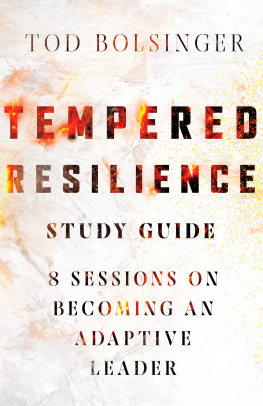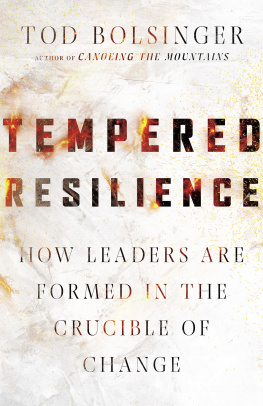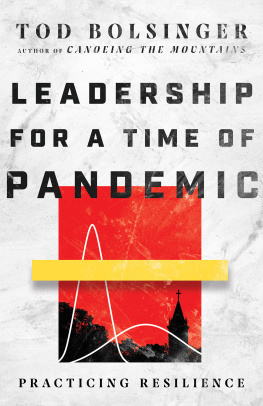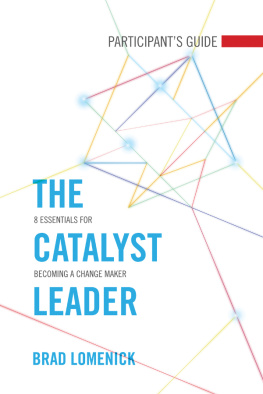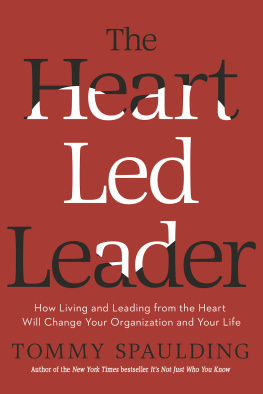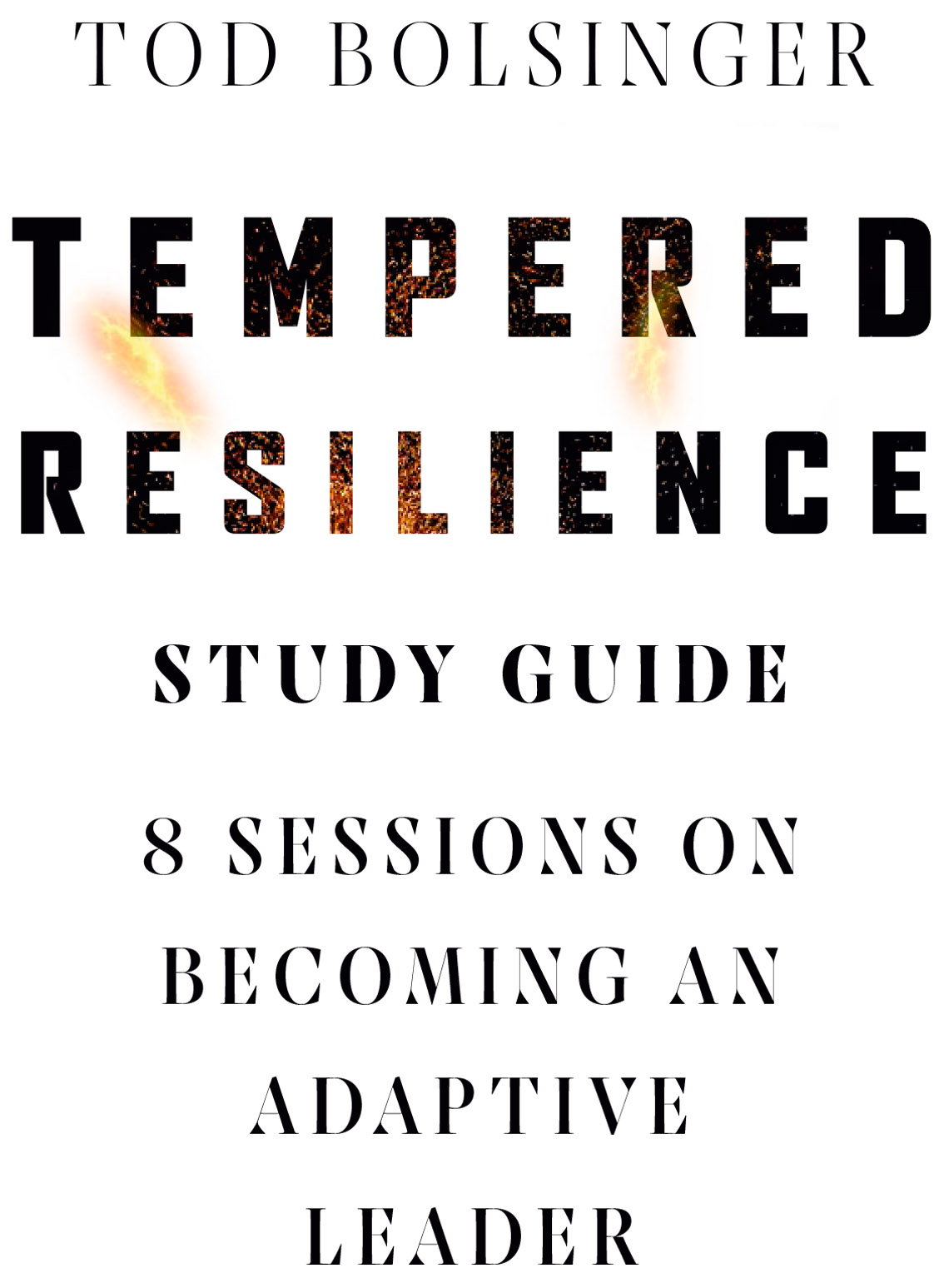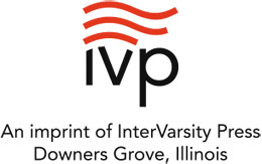Sommaire
Pagination de l'dition papier
Guide
InterVarsity Press
P.O. Box 1400, Downers Grove, IL 60515-1426
ivpress.com
2020 by Tod E. Bolsinger
All rights reserved. No part of this book may be reproduced in any form without written permission from InterVarsity Press.
InterVarsity Pressis the book-publishing division of InterVarsity Christian Fellowship/USA, a movement of students and faculty active on campus at hundreds of universities, colleges, and schools of nursing in the United States of America, and a member movement of the International Fellowship of Evangelical Students. For information about local and regional activities, visit intervarsity.org.
Scripture quotations, unless otherwise noted, are from the New Revised Standard Version Bible, copyright 1989 National Council of the Churches of Christ in the United States of America. Used by permission. All rights reserved worldwide.
While any stories in this book are true, some names and identifying information may have been changed to protect the privacy of individuals.
The publisher can't verify the accuracy of website hyperlinks beyond the date of print publication.
Cover design and image composite: David Fassett
Images: burst of glowing lines: Baac3nes / Moment Collection / Getty Images
bonfire sparks: Malorny / Moment Collection / Getty Images
ISBN 978-0-8308-4171-4 (digital)
ISBN 978-0-8308-4170-7 (print)
This digital document has been produced by Nord Compo.
Introduction
We will be able to hew out of the mountain of despair a stone of hope.
MARTIN LUTHER KING JR.
M ANY OF MY FAVORITE PASTIMES required a guidebook of sorts to get me started. Because I was well into adulthood before YouTube and Google became the go-to source for how-to information, I have a love for guidebooks and cookbooks, for recipes and maps. If I was planning an adventure, I would get the latest Lonely Planet guidebook and the most up-to-date maps. My kitchen is filled with dog-eared cookbooks. But the rise of the digital just-in-time resources means that my smartphone has access to more maps and information than Neal Armstrong had at his disposal when he soared to the moon, or more recipes than Julia Child could translate in a lifetime. So what then of study guides like this?
My previous book, Canoeing the Mountains, was published, originally, without a study guide, and we added one later after people started requesting one. People who had the material in the book wanted more tools for processing the lessons and for conversation. Indeed, one of the most interesting things I heard was how many people were using these materials in groups or pairs or teams. Something about learning new material, developing new skills, and talking about what we are learning with people is enlivening, empowering, even inspiring. So, with Tempered Resilience: How Leaders Are Formed in the Crucible of Change, we are offering this study guide written specifically with leaders and their partners in mind.
Let me review, however, two assumptions at the heart of everything I write.
First, leadership is a skill that can be taught. Some, of course, have more natural skills or have had life experiences that lead to more quickly understanding the concepts or making the connections to what needs to be learned, but everyone can become a better leader. That shouldnt be a surprise to anyone who knows that I am a seminary professor. We teach students other skills like writing, listening, counseling, interpreting, and preaching. Of course the same caveats about natural abilities apply, but we teach everyone who is admitted to the school. That doesnt mean it is easy. In the book I tell the story of trying to become a better fly-fisher even though I have years of experience in the sport. It was, as I wrote, a humbling day. Indeed, all learning is hard. Learning skills that do not come naturally to most of us (like staying calm when confronted, asking good questions, and honest self-reflection to the point of deep vulnerability) is even harder. But the book offers a formation process that can be learned by anyone who has the humility and tenacity (two key concepts in the book) to learn, and this study guide seeks to make that process more accessible by breaking down the concepts and the exercises into definable steps.
Second, we learn best in relationships. It shouldnt be a surprise that we learn best with others. Im a Christian, and the word for learner is disciple, and discipleship has always beenright back to Jesus himselfa deeply relational process. New York Times columnist and author David Brooks says that we learn from people we love. And as we discuss in the book, leadership leads to vulnerability that requires the security of relationships to endure. Leading in the face of resistance leaves us feeling exposed, unsure, and often discouraged, so tolerating and learning from the experience of vulnerability is only possible if we know that we are well held by our relationships. The book and this study guide are meant to be shared. They are meant to be read and discussed in relationships. I have structured the sessions in this guide to lead to honest conversations for self-discovery and to offer practices that leaders and their teams can take on together. For an online course covering content related to this book, go to formation.fuller.edu/courses/resilience.
And these two assumptions are even more critical to the subject matter of the particular book this study guide was written for. Tempered Resilience: How Leaders Are Formed in the Crucible of Change is about forming leaders to take on the challenge of leading in a changing world. Specifically, it is for the particular purpose of forming resilience in leaders so they can lead through the resistance that always accompanies leading change.
So those two assumptions are at the heart of this study guide: the formation of leaders who demonstrate resilience in the face of resistance is something that can be learned and requires relationships.
One final word about this study guide. It mirrors the formation process of the book itself, a process that I illustrate with the way that raw steel is forged into a tool that can be used to hew through and transform the rock-like resistance of people into what Dr. Martin Luther King Jr. called stones of hope. In this book, we discover that
Tempering a leader is a process of reflection, relationships, and practices during the act of leading that form resilience to continue leading when the resistance is highest. It includes vulnerable self-reflection, the safety of relationships and specific spiritual practices and leadership skills in a rhythm of both work and rest. (Tempered Resilience, 5)
And so this study guide is broken into sessions that follow the process for becoming a resilient, tempered leader, a process illustrated with the metaphor of blacksmithing:
Becoming a tempered leader
Working: Leaders are formed in leading.
Heating: Strength is forged in self-reflection.
Holding: Vulnerable leadership requires relational security.
Hammering: Stress makes a leader.
Hewing: Resilience takes practice.
Tempering: Resilience comes through a rhythm of leading and not leading.

